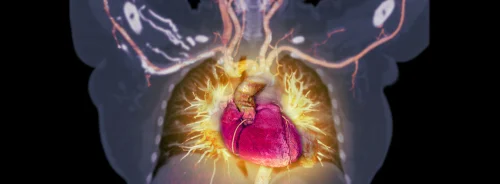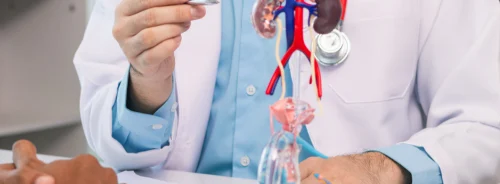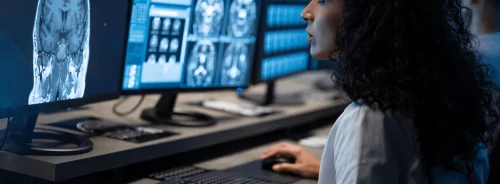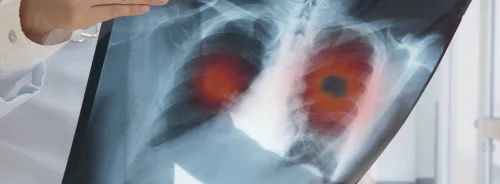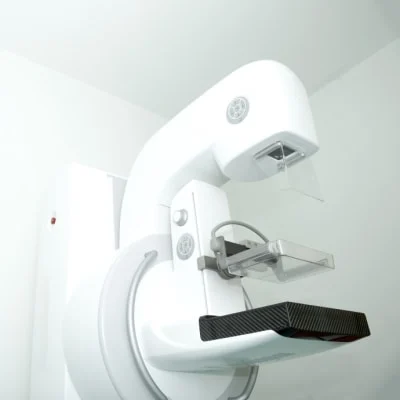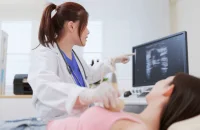Axillary lymphadenopathy is a common side effect of the COVID-19 vaccination, leading to increased imaging-detected asymptomatic and symptomatic unilateral axillary lymphadenopathy. This has threatened to negatively impact the workflow of breast imaging services, leading to the release of ten recommendations by the European Society of Breast Imaging (EUSOBI) in August 2021. Considering the rapidly changing scenario and data scarcity, these initial recommendations kept a highly conservative approach. As of 2023, according to newly acquired evidence, EUSOBI proposes the following updates, in order to reduce unnecessary examinations and avoid delaying necessary examinations.
New clinical data prompts recommendations revision
Since the onset of COVID-19 vaccination campaigns, axillary lymphadenopathy has become a common side effect, particularly detected through imaging. This occurrence has posed challenges for breast imaging services due to the need for additional assessments and its potential impact on workflow. To address this, the European Society of Breast Imaging (EUSOBI) released ten recommendations in August 2021. However, evolving data have prompted a reassessment of these recommendations, especially concerning the timing of screening mammograms around vaccination and the management of asymptomatic lymphadenopathy. New evidence suggests a minimal risk of subsequent malignancy in asymptomatic patients with no suspicious breast findings. Follow-up intervals for persistent lymphadenopathy are also under review, with a shift towards longer intervals based on emerging data. Additionally, the potential impact of other vaccines on lymphadenopathy persistence is considered. This update of the 2021 recommendations reflects the evolving evidence to ensure alignment with clinical practice in breast imaging services.
Eight of the ten recommendations provided in August 2021 are still valid today, while two (recommendations 3 and 7) need to be revised according to new information. All recommendations are again presented below, in the official wording from EUSOBI, and a brief rationale is proposed for selected items.
1. | In patients with a previous history of breast cancer, vaccine injections (both doses for two-dose vaccines) should be performed in the contralateral arm or in the anterolateral thigh. |
2. | COVID-19 vaccination data (vaccination status, date, dose, injection site) of all patients presenting for breast imaging with any modality should be collected and made available to radiologists, including the cases of breast imaging performed for cancer staging and of follow-up imaging examinations. |
3. | Breast examinations should not be delayed because of COVID-19 vaccination. |
Rationale: The previous recommendation was in favour of rescheduling breast examinations (before the vaccination or at least 12 weeks after the last injection). However, current evidence points towards a near-zero risk of subsequent malignant findings in asymptomatic patients who have unilateral lymphadenopathy and no suspicious breast findings (no cancer cases in the largest series published to date). Moreover, predictive models developed based on data from the first pandemic waves revealed that delayed or missed screening tests have a negative effect on morbidity and mortality. Therefore, the potential temporal overlap of COVID-19 vaccinations in combination or staggered with other vaccines known to cause transient lymphadenopathy should no longer be considered a reason to reschedule periodic breast examinations, either in spontaneous or organized screening programs.
4. | In patients newly diagnosed with breast cancer, all necessary breast imaging examinations with any modality must be performed without any delay due to vaccination, taking into consideration the risk of false positive lymph node findings. |
5. | The contralateral axilla and both breasts should be clinically examined using appropriate imaging to exclude malignancy in all patients with axillary symptoms and in all cases of imaging-detected unilateral axillary lymphadenopathy before vaccination or at least 12 weeks after. |
Rationale: Aside from isolated reports of vaccine-associated lymphadenopathy up to 43 weeks after vaccination, the available literature shows that most cases of vaccine-associated lymphadenopathy arise within 50 days from vaccination. Thus, the 12-week follow-up threshold after vaccination—after which axillary lymphadenopathy should also prompt the examination of both breasts and of the contralateral axilla—is still considered appropriate, and the recommendation has not been revised.
6. | In patients with or without previous breast cancer history, imaging-detected suspicious axillary lymphadenopathy contralateral to the vaccination side should be managed according to standard work-up protocols, including, when necessary, tissue sampling. |
7. | In patients without a breast cancer history and no suspicious breast imaging findings, imaging-detected unilateral axillary lymphadenopathy on the same side of recent COVID-19 vaccination (i.e. within 12 weeks) should be classified as a benign finding (BI-RADS 2), and no further work-up should be pursued. |
Rationale: In the previous version, the conservative approach adopted in the absence of sufficient available evidence led to different recommendations for patients with and without axillary symptoms. Today, this type of attitude is hardly justified, and recommendation 7 has been simplified.
8. | In patients without breast cancer history, incidental unilateral axillary lymphadenopathy after COVID-19 vaccination coupled with ipsilateral suspicious findings in the breast at any imaging modality should be managed according to clinical practice, including biopsy when appropriate. This recommendation has not been revised. |
9. | In patients with personal breast cancer history, lymphadenopathy after vaccination should be interpreted considering the time since vaccination and overall nodal metastatic risk (cancer type, location, stage, etc.) [16]. For patients at low risk of axillary or supraclavicular nodal metastases in whom the lymphadenopathy is overwhelmingly more likely due to the vaccination than to the underlying neoplasm (considering time frame, pain, type, and location of cancer), a cautious management strategy without default follow-up imaging is appropriate. Short-interval follow-up imaging with ultrasonography (with at least a 12-week delay) may be performed in patients with higher risk of metastatic lymphadenopathy (e.g. breast cancer, head and neck cancer, upper extremity/trunk melanoma, or lymphoma). Node biopsy should be considered in the setting of high nodal metastatic risk when immediate histopathologic confirmation is necessary for timely patient management. |
10. | All complex or unclear cases (e.g., axillary lymphadenopathy ipsilateral to the cancer and the side of vaccination within 12 weeks after vaccination in patients with previous bilateral breast cancer; vaccinations performed on different sides) should follow personalised management, considering the risk of malignant lymphadenopathy, opting for tissue sampling when appropriate after multidisciplinary team discussion. |
This update of the original EUSOBI recommendations released in August 2021 aims to minimise unnecessary additional imaging and invasive procedures. Primarily, it seeks to prevent potential delays in breast cancer screening examinations. Further updates to these recommendations will be contemplated if evolving booster recommendations or the introduction of new vaccines or adapted versions of existing ones significantly alter the clinical landscape.
This update of the original EUSOBI recommendations released in August 2021 aims to minimise unnecessary additional imaging and invasive procedures. Primarily, it seeks to prevent potential delays in breast cancer screening examinations. Further updates to these recommendations will be contemplated if evolving booster recommendations or the introduction of new vaccines or adapted versions of existing ones significantly alter the clinical landscape.
Source: Insights into Imaging
Image Credit: iStock

